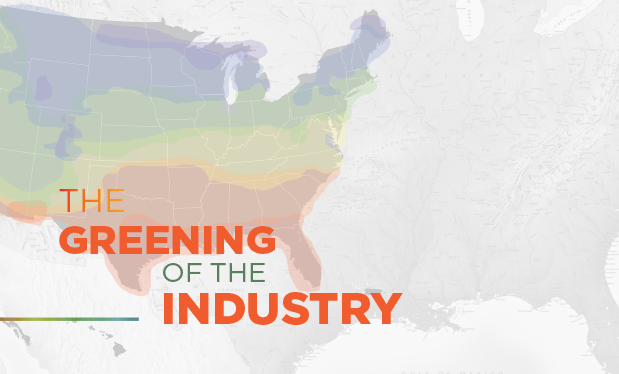Editor’s note: This article is for general educational purposes only and does not constitute legal advice.
Throughout the U.S., consumers are seeing higher prices for a host of products, and the trend is affecting the construction industry, as well. Many factors play a role in these increased prices, but key among them are a lack of truckers to deliver goods and steeper prices for diesel fuel.
The trucking issue
The truck driver shortage has been progressing for years. As Baby Boomers retire from trucking careers, there are not enough younger drivers to fill the gap. As a broad generalization, the Millennial generation does not seem to be as willing to drive cross country and be away from their families and homes for weeks on end. The issue is becoming more concerning as consumer demand for all materials increases.
According to American Trucking Associations, the trucking industry transports and delivers more than 70% of all freight in the U.S. It relies on more than 3.5 million well-trained and certified drivers to ensure the supply chain is operational. Also, according to an April 2021 letter from supply chain leaders to Congress, the U.S. is experiencing a shortage of an estimated 60,800 drivers. And that deficit is expected to grow to 160,000 drivers by 2028.
The COVID-19 pandemic worsened the problem. Truck driving schools temporarily closed, as did some departments of motor vehicles offices, which delayed the training of potential new drivers. Online shopping increased during the pandemic and added to the need for more delivery drivers. The lack of truckers is causing freight prices to rise, which results in higher prices for goods ranging from cereal to plywood.
As we look to the future, self-driving trucks may provide some sort of solution, but for the next few years, the shortfall of truck drivers likely will be difficult to overcome. ATA projects the industry will need to hire about 1.1 million new drivers during the next decade (an average of 110,000 every year) to keep pace with demand.
The cost of diesel fuel
In addition to the driver shortage, the trucking industry faces increased diesel fuel costs. Crude oil prices are rising to about $60 per barrel at press time compared with $37 per barrel before the onset of the COVID-19 pandemic. And the price of crude oil has a direct effect on diesel fuel, which keeps U.S. trucks running.
In March 2021, the cost of diesel was $3.07 per gallon, which is 22 cents higher than in spring 2020. And experts predict the per-gallon price will continue to rise throughout 2021.
Since the middle of 2020, many key countries have cut their oil production. Saudi Arabia, for example, reduced production 20%. In the U.S., oil production also is lower. Some of that decrease was caused by severe winter weather, which damaged equipment in Texas and other states.
TruckersReport calculates the most significant expense for commercial trucking is fuel, accounting for 39% of total operating costs. As diesel prices rise, so do the overall costs, which trickle down to affect the price of materials.
Price increases and delays
The trucker shortage and higher diesel prices could result in higher costs and material delays. Both of those factors will affect construction projects in the months ahead, making project estimates and schedules challenging. So how can you protect yourself?
Make sure your contracts allow for price fluctuations. A price acceleration clause is critical because it allows you to increase your price if the cost of materials rises after the original agreement is signed. A standard price acceleration clause usually stipulates that if material costs increase by more than 5%, the contract price will increase to reflect the cost increase without the need for a change order. However, you will need to document such a price increase and provide it to the building owner.
If you are a subcontractor and have included a price acceleration provision in your contracts, you also can request the prime contractor include one in its contract with the building owner. Just as you could charge a higher price to the prime contractor, that provision would enable the prime contractor to cover material price increases by charging a higher price to the building owner as needed.
Some building owners may object to a price acceleration clause and will prefer fixed prices. In these cases, consider buying and storing common materials before a project starts if possible. You also should have conversations with your suppliers and let them know your priorities. As you build strong relationships with them, these partnerships will help you ensure you get the materials you need for every project.
Given the truck driver shortage, it is likely material deliveries will be late, so be sure to review your contracts for language related to delays. In some instances, late material deliveries will not be considered excusable delays, so you may be expected to accelerate your work schedules to make up the time. This can lead to higher labor costs, which also will affect your bottom line. If possible, revise your contracts to stipulate extensions for material delays. Keep your customers informed as soon as you recognize a delay is looming.
Looking ahead
The remainder of 2021 will be challenging. The construction industry experienced material scarcity during the COVID-19 pandemic, and the ongoing issues with trucker shortages and increasing fuel prices could prevent supply chain issues from drastically improving. Remember, hope is not a strategy. Rather than hoping you can secure the materials you need at reasonable prices, take steps now to make it happen by planning ahead and taking time to carefully review your contracts.
TRENT COTNEY is CEO of Cotney Attorneys & Consultants, Tampa, Fla., and NRCA’s general counsel.



